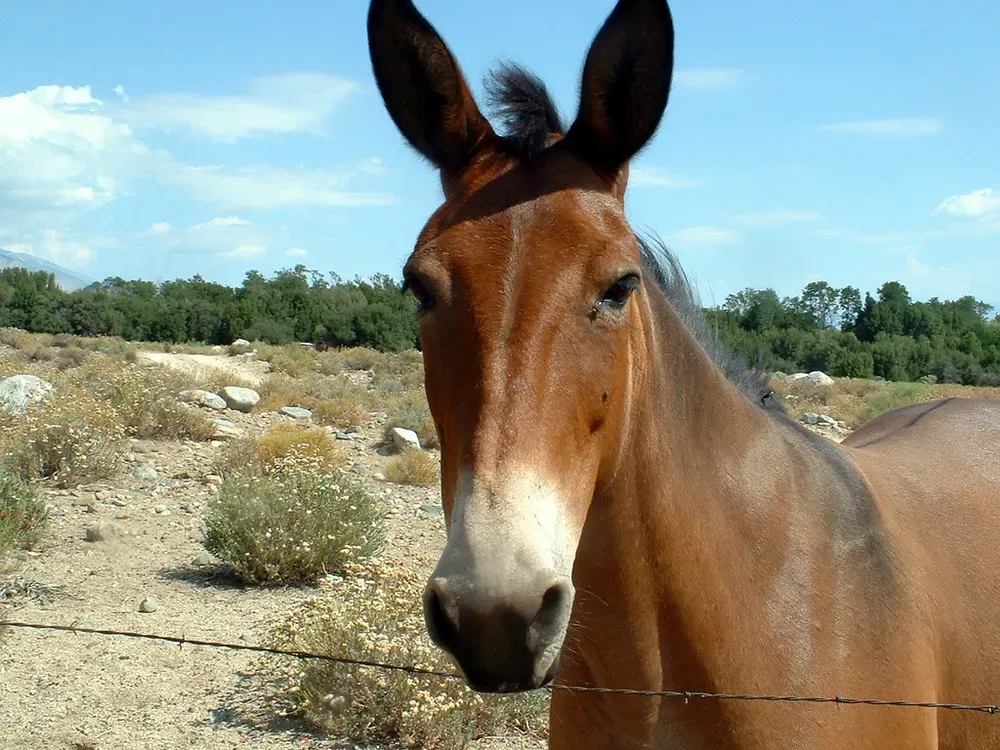
Table of Contents
Introduction
In the world of equine companions, horses often take the spotlight, but let's not forget their trusty and often underrated cousins - the mules. Mules are a unique and extraordinary hybrid of a male donkey and a female horse. Riding mules, though less common, offers an experience unlike any other in the world of equestrian activities. In this article, we will explore the charm, history, and practical aspects of riding mules, revealing why this unique equine experience is well worth trying.
The History of Mules
Mules have a rich history that dates back thousands of years. They were first bred by the ancient civilizations of Egypt and Mesopotamia. The hybrid's primary advantage is their combination of strength and endurance, making them ideal for a variety of tasks, from agriculture to transportation.
One of the most famous mule rides in history was the Lewis and Clark expedition. In the early 1800s, the explorers ventured westward across the uncharted American wilderness, and their mules played a crucial role in this remarkable journey. Mules were known for their durability, sure-footedness, and ability to carry heavy loads across difficult terrain, which proved essential for the expedition's success.
The Unique Charm of Riding Mules
- Versatility: Mules are incredibly versatile animals. They excel in various equestrian disciplines, from trail riding to pack trips, and even competitive sports like mule racing and dressage. Their adaptability makes them suitable for both beginners and experienced riders.
- Strength and Stamina: Mules inherit the best qualities of both donkeys and horses. They possess the donkey's sure-footedness, resistance to harsh conditions, and intelligence, combined with the horse's strength. This unique combination gives riders a secure and dependable partner for various riding experiences.
- Safety and Sure-Footedness: Mules are known for their cautious nature, making them excellent for riders who may be nervous or inexperienced. They tend to be less prone to spooking and are known for their ability to navigate challenging terrain safely. Riding a mule provides a stable and secure feeling in the saddle.
- Low Maintenance: Mules are known for their durability and ability to thrive in adverse conditions. They often require less maintenance and care compared to horses, making them a practical choice for those looking to enjoy riding without the high upkeep costs.
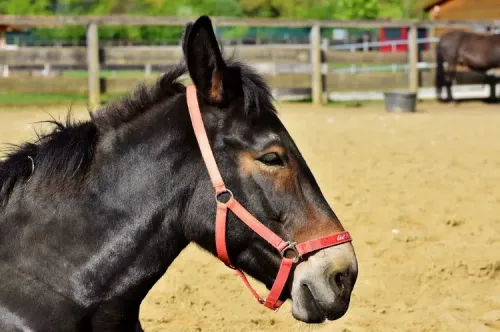
Article Suggestion
The Lives of Tennessee Farming Mules in the late 1940sTwo Unique Aspects of Mules over Horses
- Laminitis Awareness: One distinctive feature of mules is their resilience to laminitis. Laminitis, a painful and debilitating condition affecting the hooves, is a common concern in horses. Mules tend to be less susceptible to this condition due to their donkey heritage, which imparts them with strong, boxy feet.
- Boxy Feet: Their boxy feet are not a problem and are incredibly sound. However, horses with boxy feet frequently have foot capsule soundness issues.
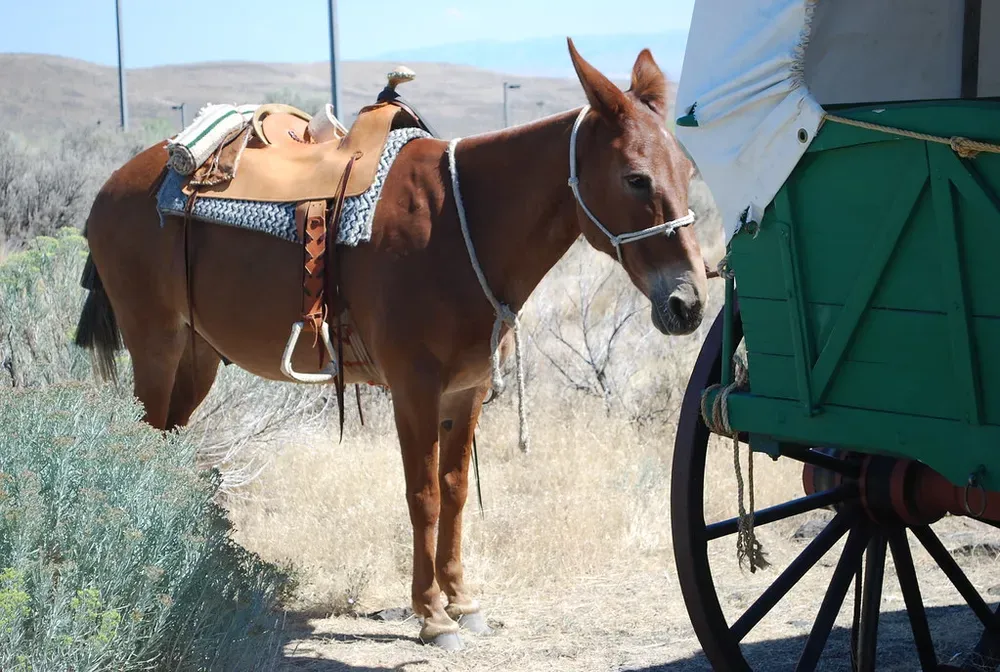
Mule Waiting Quietly
Three Tips for Riding Mules
- Get Proper Training: If you're new to riding mules, it's essential to receive proper instruction. Riding a mule can be different from riding a horse, and understanding their unique behaviours and cues is crucial for a positive experience.
- Respect Their Individuality: Just like horses, each mule has its personality. Understanding and respecting their individuality will lead to a better partnership.
- Build a Relationship: Spending time with your mule, grooming, and bonding can help create a strong and trusting partnership, which is essential for a positive riding experience.
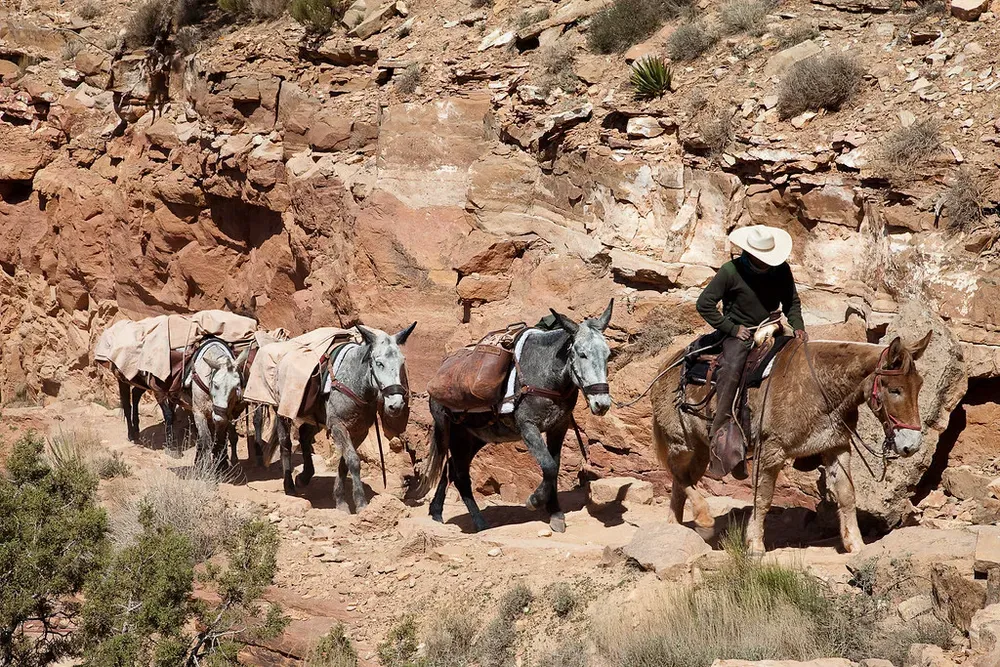
Working Mules
Most mules are sensible and dependable and this makes them useful for carrying packs in difficult terrain.
Use the Right Saddles and Equipment for Mules
Mules generally have a distinct back shape compared to horses, which can make saddle fitting a bit challenging. However, with the right expertise and equipment, this can be easily managed. Specialised mule saddles are available, designed to accommodate their back shape, and with proper fitting, they ensure the comfort of both rider and mule. The extra effort put into saddle fitting is well worth the comfort and performance it ensures.
Understanding the Mules Convex Back Shape
Mules generally have a convex or "banana" back shape, unlike the flat or slightly concave backs of horses. This curvature is due to their genetic heritage, which includes both donkey and horse elements. The convex back serves as a natural adaptation for these strong and sure-footed creatures, but it can pose a challenge when it comes to saddle fitting. Ill-fitting saddles can cause discomfort, pain, and even long-term injuries if not addressed properly.
To address the convex back shape of mules, it is crucial to choose a saddle designed to accommodate their unique anatomical features. These saddles typically have a more rounded tree or gullet, which aligns better with the mule's back. Additionally, understanding the specific measurements of your mule's back, such as its width and length, can help in selecting a saddle that fits snugly without causing pressure points.
Saddles often Slip Forward on Mules
One of the most common challenges mule owners face is the tendency for saddles to slip too far forward. This issue can lead to discomfort for the mule, and decreased rider stability. To prevent saddle slippage, consider the following strategies:
- Use a Saddle Pad with Non-Slip Material: Utilising a saddle pad with a non-slip material on the underside can help prevent slippage. This additional layer of grip between the saddle and the mule's back can significantly improve stability.
- Use Cruppers or Breeching: Either will prevent the saddle from slipping forward but the breeching method does stop the mule from fully extending its back leg when going uphill.
- Proper Girth Placement: Ensure the girth or cinch is positioned correctly. It should be snug but not overly tight, allowing for the natural movement of the mule's body. Check the girth regularly during rides to maintain the proper tension
Mules Endurance Riding Achievements
Mules have left their mark in endurance riding events such as the Tevis Cup, a gruelling 100-mile race across the Sierra Nevada. Over the years, mules have demonstrated their exceptional stamina, sure-footedness, and ability to endure the most challenging terrains. For example, "Ticket the Mule" and "Mule Polly" are celebrated mules that have successfully competed in and completed the Tevis Cup, proving that mules are more than capable of conquering the most demanding endurance rides.
Mule Unique Coat Colours
Mules come in a variety of coat colours, often influenced by their donkey and horse parentage. Their unique coat patterns and colours can add a delightful aesthetic element to your equestrian experience. From buckskin and dun to roan and appaloosa, mules exhibit an array of captivating coat colours.
A Specialised Mule Care Need
Mules have one unique care requirement compared to horses. Unlike horses, mules do not produce oil to maintain a waterproof coat, which makes them more susceptible to wet conditions. Therefore, it's essential to provide them with shelter and rugs during inclement weather to keep them dry and comfortable.
The take-home Message
Riding mules offers a remarkable and underappreciated equestrian experience. Their blend of strength, sure-footedness, laminitis resilience, unique coat colours, and incredible achievements in endurance riding sets them apart from other equine companions.
Mules have been instrumental in countless historical and modern-day expeditions, showcasing their durability and adaptability. By embracing the uniqueness of mules, and considering aspects like saddle fitting and specialised care, riders can embark on a journey that is both distinctive and deeply rewarding. Riding a mule is not merely a ride; it's an experience that encompasses history, resilience, and a touch of the extraordinary.
FAQs
Are mules as fast as horses?
Can I keep a mule with my horses and not have a lungworm problem with the horses?
Are mules stubborn as the saying goes "as stubborn as a mule"?
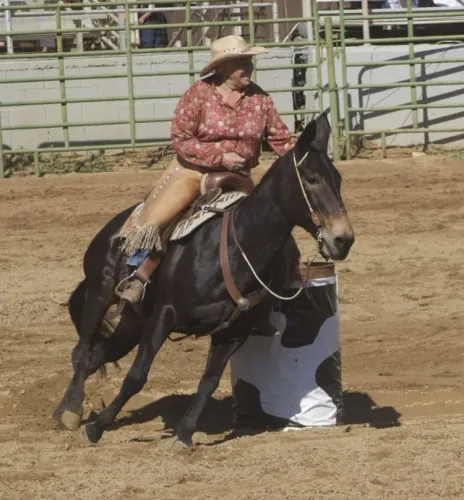
Article Suggestion
Lungworm in Horses, Mules and Donkeys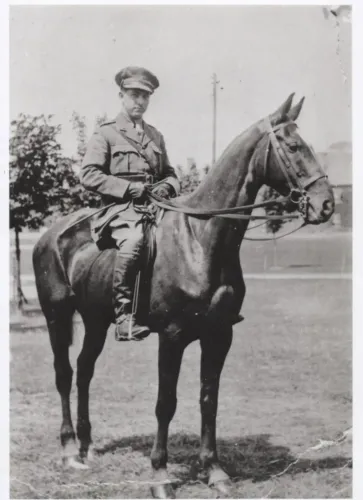
Article Suggestion
Shot between the eyes and lived an Incredible but true story
